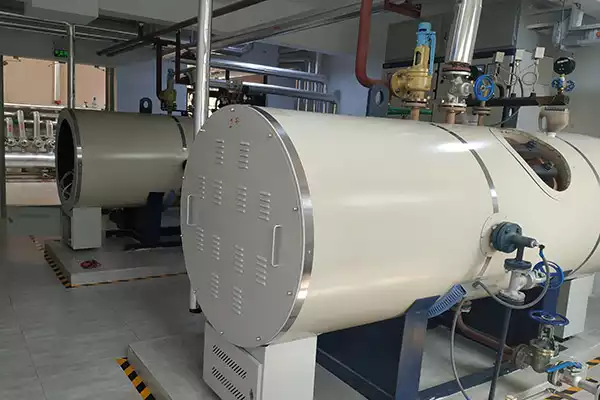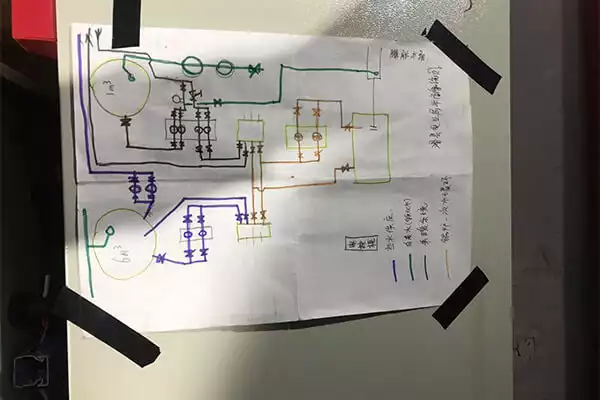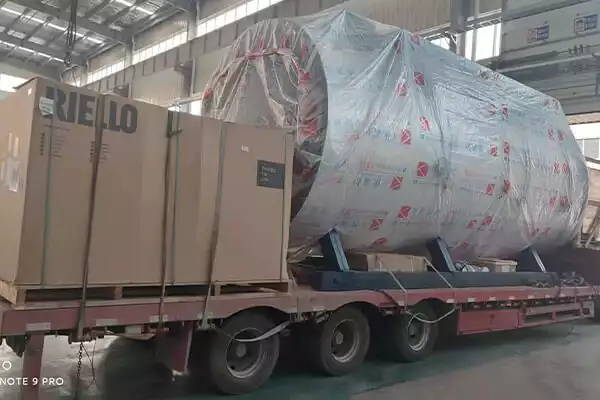
Used/Waste Oil Boilers for Sale | Complete Guide
A used oil boiler is a type of boiler that heats water using oil. They’re commonly used to heat homes and businesses, as well as provide hot water. Waste oil boilers use an external combustion process that requires an oil-fired boiler to heat water into steam before it enters the radiators or underfloor heating system. In this guide, you can learn more about waste oil boilers. To help you make good choices.
What is a waste oil boiler?
A waste oil boiler is a type of heating system that is designed to burn waste oil as its fuel source. Waste oil refers to used or contaminated oil that is generated as a byproduct of various industrial processes, such as automotive maintenance, manufacturing, or oil changes. Instead of disposing of this waste oil, it can be recycled and used as a cost-effective fuel in a waste oil boiler.
Waste oil boilers are specifically designed to handle the unique characteristics of waste oil, including its impurities and high viscosity. They typically feature advanced combustion systems and specialized components to ensure efficient and clean burning of the waste oil. The heat generated by the burning process is then used to produce hot water or steam for heating applications.
Dapatkan harga tetap dalam talian di 20 saat:
Working principle.
The used oil burner is commonly used in various industrial applications, such as in waste oil heaters, boilers, or furnaces. Here is a general overview of how a used oil burner works:
- Oil Supply: Used oil is collected and stored in a tank or container. The oil may undergo pre-treatment, such as filtration or heating, to remove any contaminants or improve its flow characteristics before being fed into the burner.
- Oil Pump: A motor-driven pump or an air-operated pump is used to supply the oil from the storage tank to the burner. The pump ensures a controlled and consistent flow of oil to the burner.
- Atomization: The oil is atomized to create a fine spray or mist. Atomization can be achieved through various methods, such as using a pressure nozzle, air atomization, or steam atomization. The goal is to break the oil into small droplets, increasing its surface area for efficient combustion.
- Ignition: Once the oil is atomized, an ignition source, such as an electric spark or a continuous pilot flame, ignites the oil mist. The ignition source is usually located near the nozzle or burner tip.
- Combustion Chamber: The ignited oil mist enters the combustion chamber, which is designed to promote efficient and controlled combustion. The combustion chamber may contain additional features, such as baffles or heat exchangers, to optimize heat transfer and improve energy efficiency.
- Combustion Air: Combustion requires an adequate supply of air. Air is typically drawn into the burner through an air intake or blower. The air and oil mist mix within the combustion chamber, creating a controlled flame.
- Heat Transfer: The heat generated by the burning oil is transferred to the desired medium, such as air, water, or steam, depending on the application. This heat transfer is used for space heating, water heating, or other industrial processes.
- Emissions Control: Depending on local regulations, a used oil burner may incorporate various emissions control devices, such as combustion air filters, exhaust gas recirculation systems, or flue gas scrubbers, to reduce emissions and ensure compliance with environmental standards.
Lifespan.
Generally, a well-maintained waste oil furnace can last anywhere from 10 ke 20 years or more. The lifespan of a waste oil furnace can vary depending on several factors, including the quality of the furnace, the maintenance and care it receives, and the operating conditions.
Efficiency.
Typically, older oil boilers may have an efficiency rating in the range of 70% ke 80%. This means that around 70% ke 80% of the energy contained in the oil is converted into useful heat, while the remaining percentage is lost through various forms of inefficiency, such as flue gas losses or heat radiation. Older oil boilers, especially those that have not been properly maintained or upgraded, tend to have lower efficiency compared to modern, high-efficiency oil boilers.
Need a new boiler?
Can you run a boiler with waste oil?
Yes, it is possible to run a boiler with waste oil. Waste oil boilers are specifically designed to burn waste oil as a fuel source, offering a cost-effective and environmentally friendly solution for recycling used or contaminated oil.
Waste oil from various sources, such as automotive maintenance, manufacturing processes, or oil changes, can be collected and stored in a tank or container. This waste oil can then be used as the fuel supply for a waste oil boiler.
How much oil does a waste oil furnace burn?
To estimate the oil consumption of a waste oil furnace, you would need to consider the furnace’s heating capacity, expressed in BTUs (British Thermal Units) or kilowatts, and its fuel efficiency. The efficiency of the furnace indicates how effectively it converts the energy in the oil into usable heat.
Oil Consumption (gal/hr or L/hr) = Energy Converted (BTU/hr or kW) / Energy Content (BTU/gal or MJ/L)
Contohnya, if you have a waste oil furnace with a heating capacity of 100,000 BTUs per hour and an efficiency rating of 80%, it would consume approximately 1 gallon (3.8 liters) of waste oil per hour. This calculation assumes that the waste oil has an energy content of around 140,000 BTUs per gallon and takes into account the furnace’s efficiency.
Dapatkan petikan dandang percuma
- ✔Dapatkan petikan dandang tempatan percuma hari ini
- ✔Bandingkan harga terbaik
- ✔Jimat wang pada dandang baru anda hari ini!
How much does a waste oil boiler cost?
The cost of a waste oil boiler can vary depending on various factors, including the size and capacity of the boiler, the manufacturer, the features and specifications, and the region or country where it is purchased. The following table shows the corresponding prices of waste oil boilers with different capacities and efficiencies:
| Waste Oil Boiler Size (Tons/hr) | Efficiency (%) | Estimated Cost Range |
|---|---|---|
| 0.5 - 5 | 80 | $5,000 - $8,000 |
| 6 - 10 | 85 | $8,000 - $12,000 |
| 11 - 20 | 90 | $12,000 - $18,000 |
| 21 - 40 | 92 | $20,000 - $30,000 |
| 41 + | 95 | $50,000 |
Kesimpulan.
In conclusion, Fangkuai Boiler stands out as a reliable and reputable brand in the waste oil boiler market. We commit to delivering efficient and environmentally friendly solutions. If you want to learn about the detailed parameters and prices of waste oil boilers, please contact us at +0086 186-2391-5479.
Mencari dandang dengan pembuatan canggih, dan kualiti yang hebat?
Dandang Fangkuai sentiasa dapat memberikan apa yang anda mahukan.
Dapatkan Harga Terbaik Anda
Cepat bandingkan 3 Petikan percuma
- Quote Quote Jurutera
- Kelajuan penghantaran keseluruhan pantas
- Pilihan Kewangan
- Kos pemasangan yang rendah dan penjimatan kos
25 years+ of boiler R&D
Lebih daripada 20 Teknologi inovatif




